6x6 Project
Curated Catalog Media Art
Curated by Mirelle Borra
6×6 project is an online artists’ community that serves as a platform for promoting and distributing artists’ moving image works, and to create an ever growing network among peers. The 6×6 project platform draws inspiration from the alternative art space movement of the 1970s in New York by utilizing the ‘artists-selecting-artists’ model—six artists, each selecting one artist for inclusion on the platform, every six weeks. 6×6 project offers a more multifaceted approach for the audience to discover time-based media art. Launched on June 17th, 2017, 6×6 project aims to disseminate artists’ works to reach a worldwide audience and to foster an ongoing dialogue. We are particularly interested in artistic practices with an emphasis on critical perspectives.
Contact Art Advisor
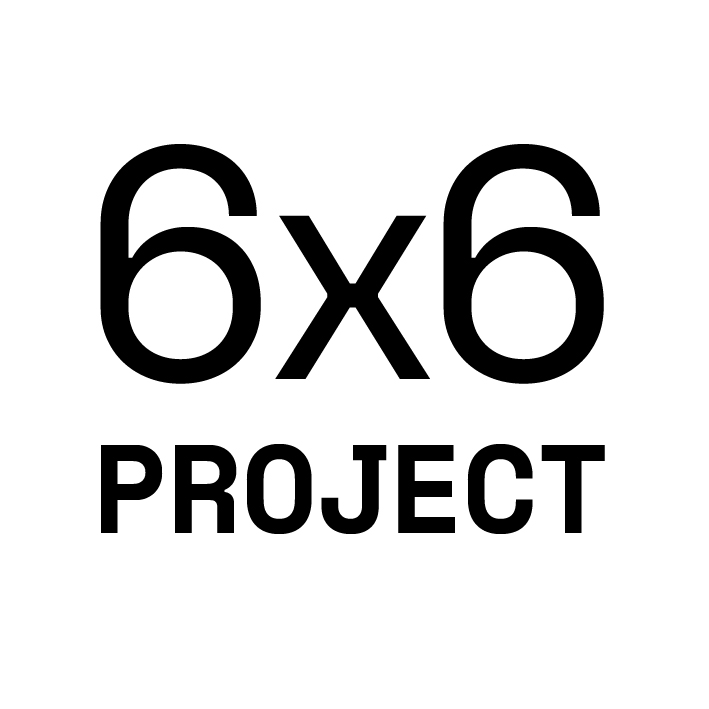
Mirelle Borra
Founder 6x6 project
Mirelle Borra’s interest in urgent global subjects merges with her keen sense of aesthetic to create thought-provoking work. Using photography and video, she engages with social and political topics to re-frame these matters in new ways. Borra seeks to examine structures of representation through a transnational perspective while staying in constant dialog with the context from which the work is derived. In 2017, she founded an online platform dedicated to the distribution and promotion of artists’ moving image works: https://6x6project.com.
Kristian Skylstad
NON DEUS EX MACHINA
In Non Deus Ex Machina Hans Skovholt & Kristian Skylstad has created a Hamsunian meditation based on the engine of the game Skyrim. In the 3D video a first person character is wandering through different romantic landscapes, watching the scenery, listening to the birds, alone, through all the four seasons. By removing the foes of the original game the video becomes meditative in the most post-modern way imaginable, suggesting a silent critique of the necessity of violence in contemporary entertainment, while at the same time siding with inertia as strategy. A credible walk simulator has never been created, and would be quite a paradoxical cultural entity if ever generated. The thought of moving through nature is quite the opposite of virtual reality. This movie suggests the now dominating cultural marker, which videogames has become, as a tool for tranquility and pure perception, but also that any movement through space is virtual, because there is almost no place untouched by human hands, tools or ideas.
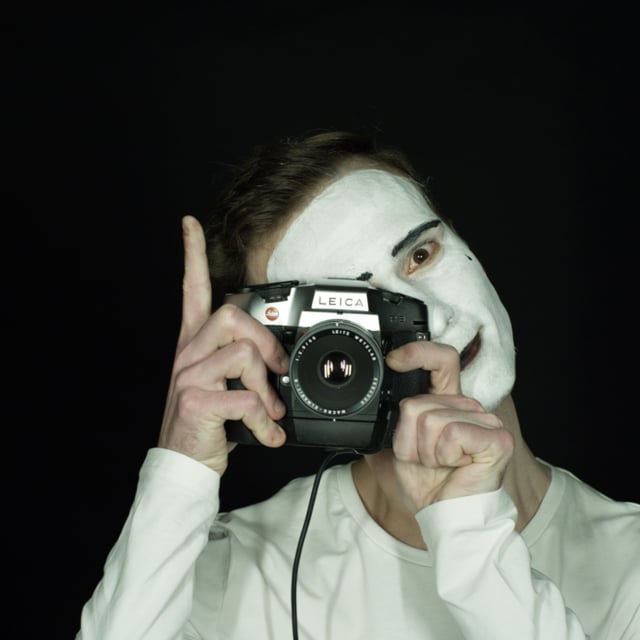
KRISTIAN SKYLSTAD
Artist
Kristian Skylstad explores human interrelations and the feelings of the individual through staging various forms of boredom, apathy, cynicism and powerlessness.
Kristian Skylstad (Born 1982 in Oslo) is a Norwegian artist who works mainly with photography, poetry, collage, video and sculpture. His work often revolves around the behaviour and emotions of the individual, distilling his pervasive sociological inquisitions into textual and photographic work unbound by context. Skylstad’s work is associated with a generation of young Norwegian artists who in the 2000’s emphasized the conceptual and post-media, evoking the spirit of The New Wave and Infrarealism. The recent years, his primarily concern has been the aftermaths of genocide, which has led to extensive studies and photographic projects in Silesia (Poland) and Cambodia.
Mariken Kramer
Schismogenesis
“Schismogenesis” is a two-channel video work. The first video shows a hand drawing up a line through space, a boundary. The second video is a stop motion animation, made up of pairs of words written on a blackboard seperated by mathematical symbols of comparison . Schismogenesis literally means “creation of division”. Within anthropology the concept was developed by Gregory Bateson in 1935 and accounted for how certain forms of relational and social processes lead to an increase in differentiation between groups and individuals. To categorize and differentiate is an integral part of how we understand / organize the world around us, but who is the “we” and the “I” that are drawn up? What are the possibilities of us ending up on the “wrong side” of the signs? And why do we need to mark boundaries? “Schismogenesis” was part of the Norwegian Drawing Biennial in 2013, the exhibition SKULPTUR at RBS in London in 2015 and was aquired by KORO (Public Art Norway) for Hamar Culture House in 2014. ARTWORK INFO Two channel HD Video / 01:00 min / Looped / 2011
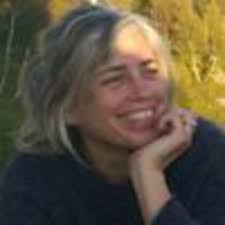
Mariken Kramer
Artist
Mariken Kramer is a visual artist based in Oslo, whose work focuses on structural and social aspects of the human condition; investigating how we perceive, interact, categorize and tell our stories.
My work deals with social and personal issues related to being human among other humans and focuses on underlying mechanisms in interpersonal encounters and relations, as well as on the vulnerability of the individual within the social group. I am intrigued by the psychological, structural and social aspects that constitute us as individuals and how we, through different narratives and storytelling, perceive, (re)present and construct our identities in relation to the collective that we are part of (or excluded from).
Nina Mangalanayagam
Lacuna
Lacuna, 2009, 11 min Movements and gestures help us to connect and communicate with people around us, but the same gestures also divide people. Our movements often become the unexplainable difference between people from different worlds, be countries or class. Our body language can act as a barrier in between people and create misunderstandings and hostilities. The video displays a performance by the artist attempting to do the Indian Head Nod, which is used heavily in South Asia for yes, no or maybe as well as in Indian dance. Members from one part of the artist’s family use the movement, but she is unable to imitate it. She cannot do the movement properly and the piece is about the struggle of trying to fit in, to adapt to someone else’s behaviour and the frustration of learning how. The piece comments on the failure of language, including body language. Her attempt lasts for ten minutes, where the viewer can witness an increasing frustration in my movements, since she repeatedly fails to do it right. The piece is silent but with subtitles exposing personal fragments from the artist’s own experience: meetings with her Tamil family, personal stories on the relationship she had as a child to her father’s background and to her own otherness in Swedish society.

Nina Mangalanayagam
Artist
Nina Mangalanayagam is a visual artist working with still and moving image. She has a Masters in Photography from the Royal College of Art and a PhD by practice from the University of Westminster. In her practice, Nina explores themes of belonging and hybridity, often using a semi-autobiographical approach. Her research analyses the shifting points of identification she experiences as a mixed heritage subject, to explore the dichotomy of black and white notions of identity.
Claudia Larcher
CYCLORAMA
The video animation entitled ‘Cyclorama’ presents an insight into imaginary interior design. The artist starts with different photo and video excerpts that are cut up and reassembled into a kind of collage with digital animation. A continuous camera movement guides the viewer through rooms that seem to be endlessly intertwined and resemble an empty office building. Real architectural details are mixed with abstract structures, forming a network of reality and surreal vision that seems to eliminate the parameters of time and space.
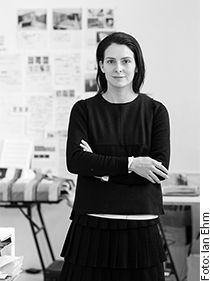
Claudia Larcher
Artist
1979, born in Bregenz/ Austria;
lives and works in Vienna/ Austria
Claudia Larcher’s artistic work deals with architecture. She is interested in places, that are connected to history, familiarity and memory, questioning the meaning of “home” and “identity”.
The last years she was working in the field of photocollage, (site-specific) video animation and mixed media installation. She is doing live visuals in performances and for live concerts. Claudia Larcher is co-curating the exhibitions of the artist collective PLINQUE since 2008.
Sarah Bernauer
Feeling Felt Episode 2: Close-up
“Feeling Felt” is an ongoing investigation of the various forms of perception. In Episode 2 (Close-up) the viewer inevitably becomes part of an intimate, otherwise not directly perceptible reality. View with headphones.
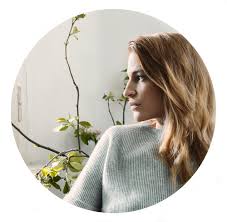
Sarah Bernauer
Artist
Sarah Bernauer, lives and works in Berlin and Basel.
Studied Multimedia and Fine Arts in Basel (Academy of Art and Design) and Vienna (University of applied Arts) and works as a artist and writer. Her work has been shown in festivals and art spaces across Europe, including outsider art fair (Paris), les urbaines (Lausanne), Bone Festival (Bern), la rada (Locarno), Salt Galata (Istanbul), Stadtmusik Festival Basel, Kunsthalle Basel, Kunstverein Heidelberg, Centre Pasquart (Biel), Technisches Museum Vienna, Kunstmuseum Thun and Lower Austria Contemporary (St.Pölten). Beside her personal work Bernauer initiated artist projects and conceptual exhibition formats like Radio Desir, A Word for a Play, Art Entertainment & Desire or The State of Making Things.
Bernd Oppl
Substanzaufnahme
Sterile spaces, white walls, black doors, no people. A glowing black liquid sloshes in, spreads out slowly across the floor, swallows the white and shapes into a plastic form. Voluminous substances, foreign, soulful, mysteriouseerie, grotesque bodies that disturb the usual perception of space.
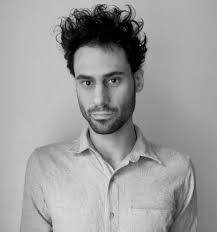
Bernd Oppl
Artist
Bernd Oppl, born 1980 in Innsbruck, lives and works in Vienna. Main solo shows: “Intermission”, Galerie Krinzinger, Vienna (2016); Kunstraum Goethestrasse, Linz (2015); Georgia Museum of Arts, USA; RLB Atelier, Linz; Amstel 41, Amsterdam (2014); artpartments, Vienna (2013); Neue Galerie, Innsbruck (2012); MQ – Artist Quarterly, Sotheby’s, Vienna (2010); Kunstverein das weisse haus, Vienna (2009).